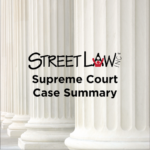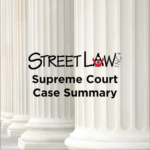The terrorist attacks on Sept. 11, 2001, stunned the nation. As commander-in-chief, President George W. Bush responded quickly but soon all three branches of government would be embroiled in the struggle to balance national security with the protection of individual liberties amid a war on terror. This lesson plan is based on the Annenberg Classroom video “Habeas Corpus: The Guantanamo Cases.” The four cases are examples of how the Supreme Court, the president and Congress fought to balance national security and civil liberties during the war on terror. At the heart of each case was the constitutional right of habeas corpus, the right to have one’s detention or imprisonment reviewed in court.
Habeas Corpus: The Guantanamo Cases
One of our oldest human rights, habeas corpus safeguards individual freedom by preventing unlawful or arbitrary imprisonment. This documentary examines habeas corpus and the separation of powers in the aftermath of the 9/11 attacks as the Supreme Court tried to strike a balance between the president’s duty to protect the nation and the constitutional protection of civil liberties in four major Guantanamo Bay cases: Hamdi v. Rumsfeld, Rasul v. Bush, Hamdan v. Rumsfeld and Boumediene v. Bush.
Closed captions available in English and Spanish.
Hamdi v. Rumsfeld (2004)
Can a U.S. citizen captured in Afghanistan, who the President claims was an “enemy combatant,” be detained indefinitely? This case summary shows how the Supreme Court answered that question in 2004.
Rasul v. Bush (2004)
Rumsfeld v. Padilla (2004)
Running Toward Danger Video Lesson
This video tells the story of Sept. 11, 2001, in New York City through primary source interviews and news footage. Ask your students to explain the role of journalists in covering catastrophes.

